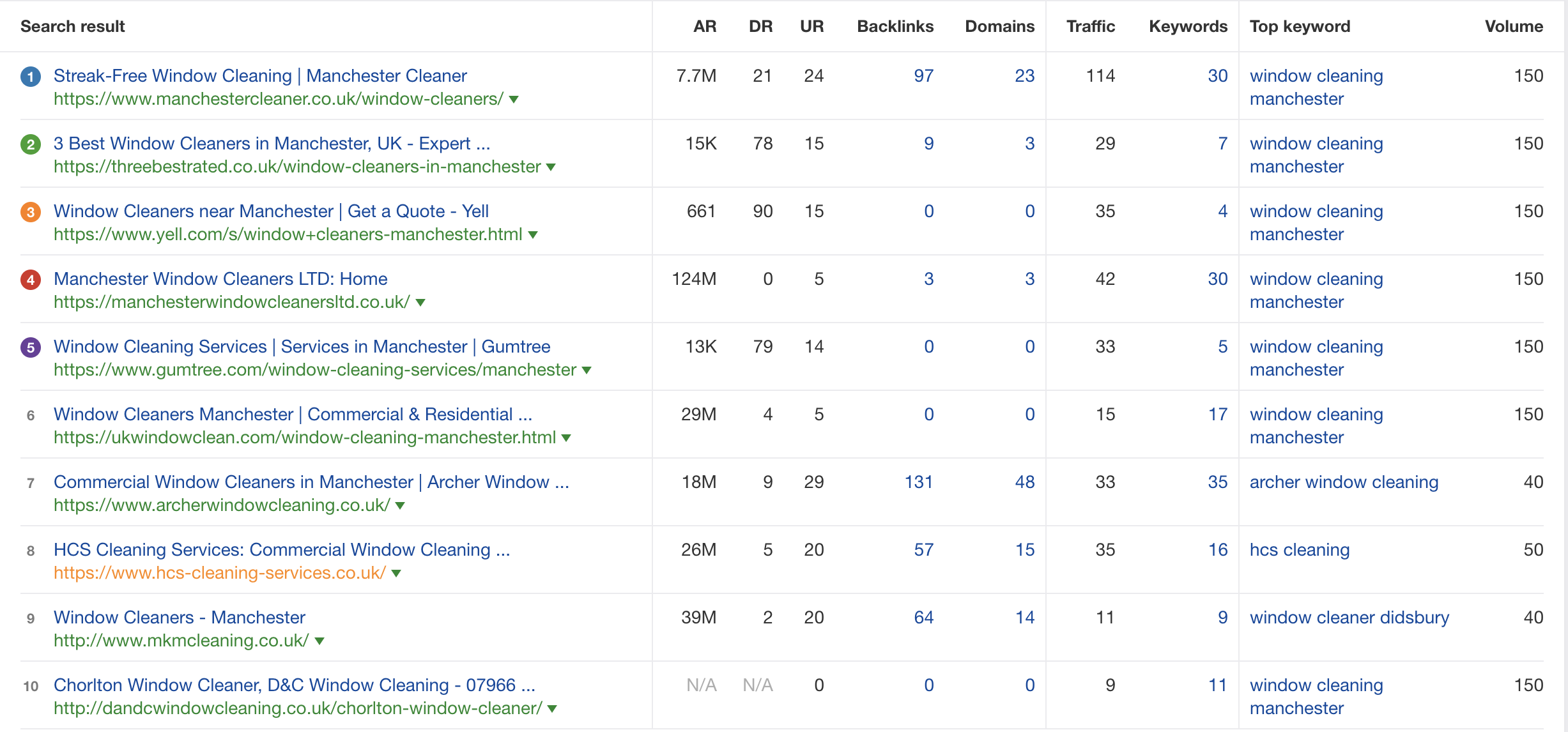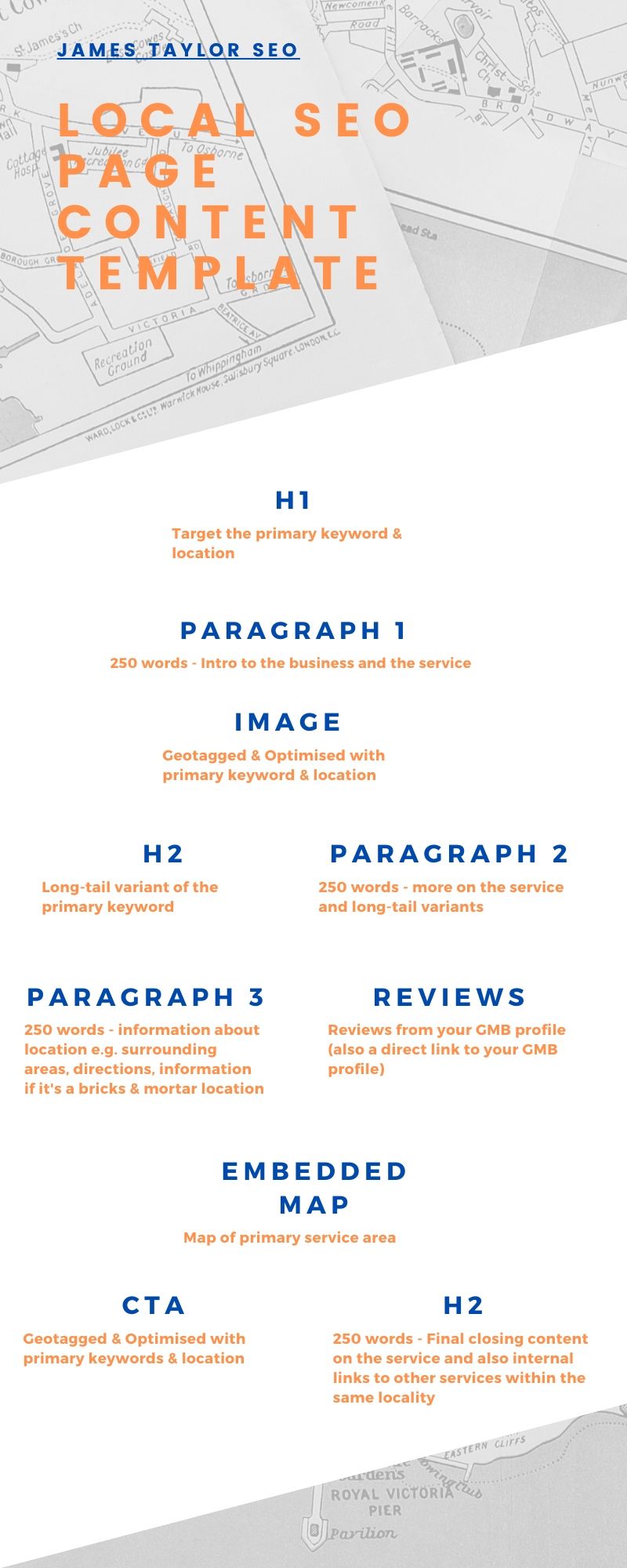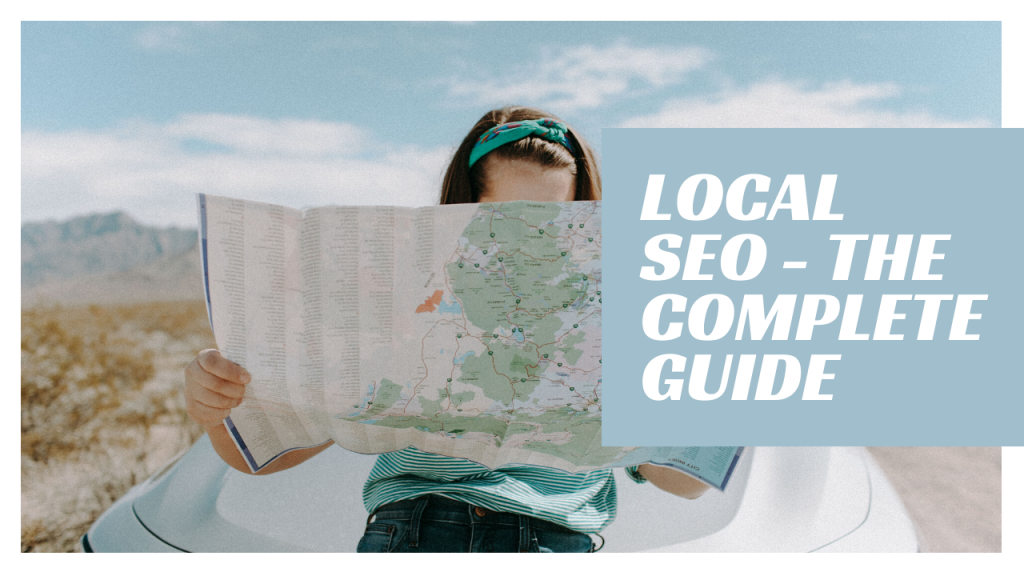Local SEO for 2022 – How to put a strategy together that works
Straight away, who am I to be telling you about how to do local SEO? Well, aside from writing a very tedious dissertation on the subject of local SEO (I’m not kidding), I’ve been a freelance SEO consultant for what feels like 26 years, but is more like 6.
Now that might not seem like a lot of time, but I’m truly obsessed with testing, building and breaking websites, especially when it comes to those in a local capacity. What that means for you is, I can now outline the approaches that I know work in 2022, as I’ve tried all the other ones so you don’t have to waste any time or money in the process.

Also, I hope you like rubbish memes from dated UK sitcoms, otherwise this will be a struggle for you more than setting up a site and doing local SEO ever will.
For the purposes of this tutorial, let’s assume you’re literally starting from scratch, so that we can then cover the entire process from the beginning.
I think this is often the issue with some tutorials or guides on SEO too. They assume a base level of prior knowledge, which is fine, but if you literally have no ideas about where to start then let’s go from the first step.
Let’s start with choosing a domain name that is right for your business. Naturally, if you run a business that is already known and has clients who will be conducting brand searches, then you’re going to want to stick with a purely branded domain.
In 2022, going for an exact match domain can still work, but if you can get something brandable instead then at least you’re not setting your site up from the very start in a way that could be considered spammy later down the line.
That doesn’t that if you want to target a specific area and have your domain follow that format, then you can absolutely do that. The era of exact match domains like manchesterroofingcompany.co.uk or tree-surgeon-shrewsbury.com certainly isn’t over.
What I mean by this is if you have something like a window cleaning business called Bobs Cleaners, but you instead choose a domain name like best Manchester window cleaners .co.uk. This isn’t 2005 anymore and whilst people still make these sorts of sites work, I’d urge you to at least try the proper way I’m going to cover in this tutorial first.
Local SEO Tutorial Video Version
How to put together a local SEO strategy from scratch
Okay, so let’s assume you’ve got a domain name and have hopefully chosen a CMS like WordPress in which to build your site on. But, it’s currently blank. So, where do you start with not only filling your site with content, but creating the type of content that search engines like to see?
Analyse Your Competition
It would be helpful for you to focus on 3-5 target keywords, at least initially, so that you don’t go down a rabbit hole in terms of doing keyword research for hundreds of keyword variants. And, don’t forget too, that Google will be showing localised results for terms even without a location e.g. ‘window cleaners’ will show you local results, so unless you’re targeting other locations you don’t need to repeat the searches with and without your location (assuming that you’re already searching from that location).
There are various levels to which you can analyse your competition. If you’re looking to get serious with the data, you can use a tool like SEMrush or Ahrefs to get an overview of the search results for your target keywords so you can realistically see the levels of competition, and start to look behind the curtain in terms of the overall strategy of your competitors.
In fact, I would strongly urge you to get a free trial to one of the above tools just so you can get the data like what I’m going to be covering below. Why would you want that level of data? So that you can know which types of keywords you can realistically compete for in your industry.
For example, for the search term ‘window cleaners Manchester’, Ahrefs shows us the following in terms of competition:

So, what does this tell us?
- DR – The domain rating given to the overall domain of the site. This is an artificial number given by marketing tools, and varies between each tool. However, generally speaking, the higher the DR, the more authoritative a site is. Now, with anything to do with marketing tools, this number can be inflated. What you need to focus on, especially for local SEO, is to look at the DR of websites that are actually direct competitors (rather than aggregator sites such as Gumtree). Then you can use these tools to reverse engineer the strategy of competitors, in terms of how they’ve managed to get a high DR.
- Search Volume – These volumes, despite the best efforts of the tools, are often just plain wrong. All I can say here is to take search volumes with a pinch of salt. It’s also why I generally target low search volumes for local clients, as this generally means lower competition. Once authority starts to grow is when you can target keywords with a higher search volume. However, with local SEO, you ultimately know roughly the types of core keywords you need to target either way, so search volumes are redundant unless you’re trying to target them via a blog post or some form of supporting content (we can cover that later).
- URL – This is a big one, as it can show you how competitors are utilising certain pages for local SEO purposes. For example in the above screenshot, the URLs in green are a mix of very specific service pages, and also the homepage. So, this tells us that at the very least, we need to create pages that explicitly state the types of services your local business provides, and the core keywords you’re targeting also need to be a focus for the homepage to rank too (which is always going to be the case regardless of what competitors are doing).
- Backlinks – We can literally see the exact backlinks of competitors, and not only that, the pages they’re getting backlinks to which are then ranking for the local keywords. This is vital in understanding how to rank locally, especially if you’re going to have to drive relevant links to service pages alongside the homepage.
Also if you don’t have either SEMrush or Ahrefs at the moment, you can read my in-depth comparison here.
How are competitors using content to target their local keywords?
Let’s look at the top result from our analysis, ‘Manchester Cleaner’. We can use a tool like Screaming Frog to get their meta data presented in a way that isn’t a horrific mess of code, so let’s do that for the page that is actually ranking #1 for ‘window cleaning manchester’ (you can also run a full crawl on competitors sites or paste in a batch of URLs if you want to analyse multiple pages):
The title tag directly targets the term ‘window cleaning’, with the location ‘Manchester’ addressed within the brand name:

The H1 also directly targets the core term in a long-tail way that keeps it looking natural (again, the core service and location are mentioned):

They’ve also added a H2 further down the page which again targets the core term and the location:

Variants of ‘window clean’ are mentioned 14 times within the page copy, and ‘Manchester’ is mentioned 7 times. The total word count of the page is just over 1,000 words, which is perfect for a page like this. I don’t want to give too much away for this page, but essentially lets break down what you need for a service page to perform well.
Local SEO Service Page Structure
Naturally, I can’t in all good faith say that this is the exact blueprint to make you rank for your core local keyword(s). I’m just showing what works for competitors and also for my own clients at the time of writing in 2022. As we know, Google are notorious in flipping the switch with algorithm changes, so if that happens then rest assured this page will be updated in good time!
How I structure service pages for local SEO
URL – I’ve seen both /service-keyword/ and /service-keyword-location/ work. I would urge you to base this off of what is working for competitors. If you are targeting a location, be sure that it’s the place you want to be operating in primarily, as any future URL changes will then mean you’re having to redirect the original URL, which can dilute authority (so it then makes sense why many sites have just /service-keyword/ as their structure).
Title Tag – You need to tread a fine line here between overkill with your primary keyword and location, but also being able to target it effectively. At the bare minimum, you want to target the core keyword and the location once. So, if your business name includes the location like our window cleaning example, then that is added at the end. For example: Bespoke SEO Agency Services | Manchester Agency. This title is readable, the keyword of ‘SEO Agency’ is targeted, and the fictional business name of ‘Manchester Agency’ targets the location keyword.
Meta Description – Meta descriptions aren’t officially a ranking factor, however I treat them as if they are, especially for smaller local websites which need to take advantage of CRO and keyword targeting with every opportunity.
H1 – This should be used for targeting your primary keyword and location, e.g. ‘Window Cleaning Manchester’. You also want your title tag and H1 to be referencing the same set of keywords, to really drive home the point to search engines that these are the target keywords of the page.
H2 – Example of a long-tail variant of the primary keyword e.g. H1 – ‘Skip Hire Manchester’ > H2 -‘Looking for a reputable skip hire company?’.
You’re essentially looking for logical and natural ways to continue to target the primary keyword and location throughout the page, without going overboard on your targeting and staying close to how often the top ranking pages mention both the target keyword and the location in question (like the example of the window cleaning site above).
Images – Geo tag, compress & add an optimised alt tag for the primary service and location. It is also vital that your image is high quality and unique. Extra points if it’s of you or your team in the process of the service in question so that anyone landing on your site can actually see that you’re legitimate.
Google Map Embed – Crucial for your local SEO landing pages when targeting a specific location
Internal Links – Internal links increase the flow of authority across your site. Also, just think of what your visitors would want to see within the content on your site. If you’re going to mention a specific service, create a page and link to it!
Writing content that works
Content is a core component of any optimised SEO strategy. What I want you to think about though is not only the types of keywords that search engines want to see when crawling your site, but what your target audience want to see to trust the content they’re seeing.
This is what separates your approach to SEO above your competition. Simply writing your target keyword over and over again is no longer enough to stay ahead of the curve. You’re better off identifying the core keywords you want to rank for locally, and looking at ways you can approach content such as the below template that will allow you to put together a properly thought-out piece of content together.
This also leads me to the type of content you should be writing. For any business, it’s not enough to just have a homepage optimised for your target keywords. You want to convey trust in your brand, especially with local SEO as visitors are no doubt going to be searching for reviews and proof that you can do the service you say you’re delivering.
With this, I would always urge any business wanting to grow their content strategy to start with either creating or optimising the following pages:
- Homepage
- About Us
- Services
- Testimonials
- Contact
- Local SEO Pages
The final bullet point leads us to…
Local SEO Landing Pages
This is a huge factor in local SEO that still works incredibly well, when done properly. And, so long as you stick to writing unique content that doesn’t overstuff keywords, you’ll be able to target locations within your primary area of service with relative ease.
For example, you may have an ‘Areas We Cover’ page that targets your region or larger city, then have 4 landing pages blatantly targeting a location within that area e.g. ‘Window Cleaners Stockport’ and ‘Window Cleaners Bramhall’.
The local SEO landing page template below can be used for these pages, just ensure that they’re as unique as possible and that you’re not repeating yourself needlessly:
Local SEO Page Template Visual (you can use this for both the local SEO landing pages covered below and for service pages)

To recap, you want your local SEO landing pages to include:
- H1
- Multiple H2’s
- Multiple Calls To Action
- Embedded Map of the area
- Link to your Google My Business profile
- Social proof of the quality of your service e.g. reviews
- Internal links to service pages
- Geotagged Images
- At least 1,000 words total of unique content
- Link building – Consider a natural link building approach for these pages, or using internal links to pass authority to your priority locations
Google My Business
Optimising your GMB profile should already be a core focus of any local SEO strategy.
An optimised GMB listing is, without a doubt, one of quickest ways to effectively become visible within your target local area for the services you provide.
It’s also not something you really need to overthink, just ensure that the following points are completed and done to the best of your ability:
- Full company address
- If you’re looking to show for a city centre search, you’ll need a city centre address to maximise the chances of ranking for those terms. For example, you could easily rent a satellite office for the purposes of GMB rankings. Note, Google may be clamping down on this in the future as more and more businesses opt for this strategy.
- Your address will still be one of the biggest deciding factors in how you rank in maps listings. For example, if my business is registered in Bolton, then it’s pretty unlikely I’ll be ranking my maps listing for SEO Manchester.
- Phone number with local area code
- Fill in all service, products and descriptions up to the limits provided
- Add geotagged images of inside and outside your business
- Ensure you’re receiving a steady flow of reviews
- Add the Short URL with one of the primary keywords you’re targeting
- Add your primary keyword to the GMB title e.g. ‘name + barbers’ or ‘name + location + barbers’ and not just the name of the barbers
- Every time you publish a blog post on your website or update a page, share that to your GMB profile too
Link Building
Citations
A citation is essentially proof from an external website that verifies your business is where it says it is. Site like Yell, Yelp and multiple national newspapers have free directories you can sign your business up to, in order to land a free backlink.
Guest Posts
Guest posts are great, assuming that your post is on a site with established traffic and that is at least somewhat relevant to your business or area of service. For example if you own a roofing company, I’d be looking for guest posts from home improvement and DIY blogs who would naturally mention things like roofing and working on external parts of a house.
You can also look for sites in the wider area of your sector and then land a guest post within a specific category on the site. For example, you could contact a generic lifestyle blogger who has more specific categories like fitness, product reviews, interior design etc.
Link inserts are also great if you’ve found a super relevant blog article that would fit perfectly with your business. You can contact the blogger to insert a relevant link back to your site within the aged, existing article for an agreed upon fee.
Just be aware that some bloggers will be like:

So be prepared to offer something in return for a relevant link. This could be a one-off payment or providing them with content for their site.
Or, you can use my site Complete White Label, and I’ll sort you out with either guest posts, link inserts and content. Shameless plug over, let’s move on…
Niche-Specific Directories
This is pretty much the same as citations, just that there will be specific ones related to your industry. The easiest way of finding these is usually to look at the top 50 competition sites in your sector, and reverse engineer where they’re getting backlinks from. Some of their referring domains are bound to be sector or niche-specific websites!
Local Sponsorships
This can still work well, however may be quite expensive. Things like sponsoring local football teams in your area for a banner ad on their website, which increases the local relevancy of your site. Again though, I’d try the citations and guest posts first unless you have the sponsorship budget to spend.
Data Landing Pages
These work very, very well. Not only are you more likely to get coverage from journalists and authority sites, but you can also build links to these pages directly with less risk as this is the type of content that would naturally attract backlinks.
So, what do I mean by data landing pages? Things like survey data and putting together ‘linkable assets’, e.g. pages on your website that bloggers or news sites actually want to link to. You can also do this in any niche or sector, it’s more about taking the time to land on a solid idea. This could be something like:
- Work satisfaction surveys for your industry
- Creating a landing page from existing stats and press releases
- A title example could be something like ‘North West roofers are the happiest roofers in the country’ – You can then show how you surveyed 1,000 roofers across the country, and outreach the data to regional papers and industry press. Pretty random example but you get the idea!
The biggest point to remember here is that it’s all about the pre outreach and initial research, to ensure you have a solid idea. Surveys are usually not cheap, so you don’t want to invest in an idea that no one wants to link to.
You can see an example of how this works through the below video and via my local SEO client case study
NAP
NAP stands for ‘Name, Address, Phone Number’. This is another quick-win you can action across your site to ensure that it’s as optimised as possible for search engines when it comes to local SEO.
This means having your business address, phone number and name on every page of your site, ideally within the footer or header of each page.
You also want to ensure that this data exactly matches that of your Google My Business profile, as search engines will cross-reference this data to essentially ensure that you are who you say you are, and are based where you say you are too!
This is all about going that extra step to show you’re a legitimate business, operating in the areas you’re claiming to be operating in.
For proof on how this works so well, head on over to my rank & rent SEO guide.
Schema
Schema code essentially provides search engines with a greater understanding around the context of the content on your website. For local SEO, you can do things like add review schema to ensure your testimonials page displays starred results in the search pages.
There’s also local business and organisation Schema, along with article Schema for your blog posts. You can see more about local SEO Schema types here.
Conclusion
Local SEO doesn’t have to be a complicated process, although it can seem daunting for beginners wanting to get ahead with their organic marketing strategies. Take the time to work through this guide step by step, the last thing you want to do is rush and then end up like:

Hopefully this guide has given you a peek behind the curtain in terms of what makes websites rank locally, and how you can effectively compete for your service keywords in a locality relevant to your business.
If you’d rather discuss local SEO strategies with me, feel free to drop me a message at hello@jamestaylorseo.co.uk
Aside from managed monthly SEO services, when it comes to local SEO I can also provide one-off approaches like:
- GMB audit and optimisation
- Citations listings
- Local SEO landing page content
- Full site audit and recommendations for SEO growth
Anyway, enough of my shameful self promotion! Best of luck with your local SEO efforts, and if you liked this guide be sure to also check out my recent post on link building strategies that actually work.


